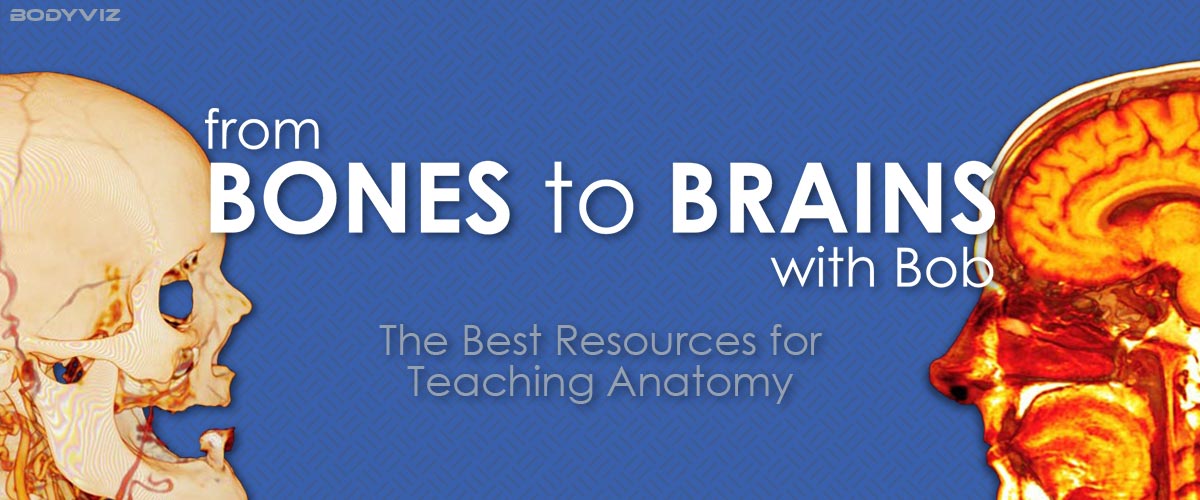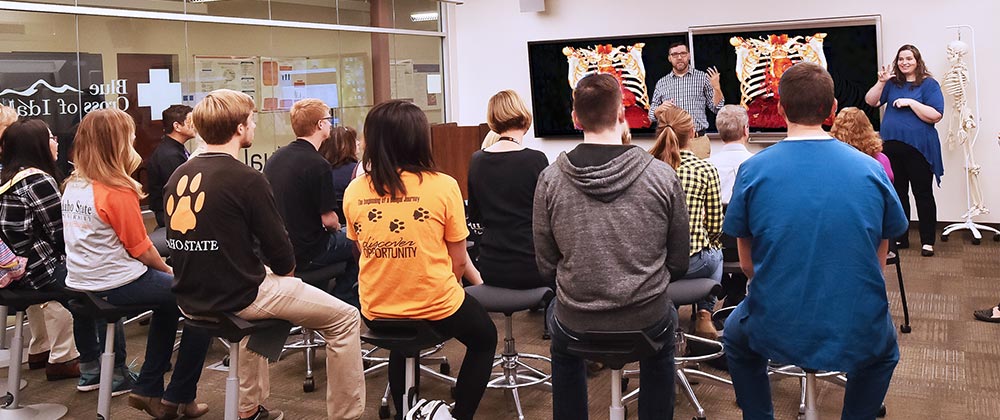The Best Resources for Teaching Anatomy
by Robert Tallitsch, PhD | March 2, 2020

“What do you teach, how do you teach it, and why?” was the title of a talk I gave at the conclusion of my three days of consulting for a medical school located here in the Midwest a few years ago. And, as I sit and write this blog piece, the talk is even more relevant today as four-year undergraduate programs, schools of allied health, and colleges of medicine question not only how much time can be allotted to gross anatomy as curricula change but how much detail should be covered in the course and how it should be taught within the curriculum.
There is no doubt about it — gross anatomy with cadaveric dissection is one of, if not the most expensive component of any health-profession curriculum. As a result, if and when cuts have to be made the costs of each and every part of the curriculum will be evaluated by any fiscally responsible administrator. If something that is more cost effective can be substituted into the curriculum without negatively affecting measurable learning outcomes it will be done. Therefore, as anatomy educators, we need to continually evaluate and advocate for cadaveric dissection in the education of the health professionals that graduate from our institutions.
Let it be said from the outset: We at BodyViz support cadaveric dissection and understand its importance within the education of the health professionals that graduate from your institution. Indeed, like almost all anatomists, we also feel that cadaveric dissection is the best tool for learning human anatomy. Indeed, if we may be so bold, we strongly believe that one can never dissect too many cadavers to learn all the anatomy that a health professional needs to know and to witness as many anatomical variations as possible.
Many times I have heard from students and colleagues that cadaveric dissection teaches more than just human anatomy. Many have stated that the process of cadaveric dissection truly changes one’s perception of the human body from that of a “lay person” to that of an “anatomist” or a “physician.” Others felt that cadaveric dissection fostered an appreciation of the gift bestowed upon the dissector by the individual that donated his/her body for anatomical study. Still others felt that dissection enhanced collaborative teamwork within the members of the dissection team. Whether we agree with some or all of these and other statements, I do believe that we can all agree that cadaveric dissection teaches dissection skills, manual dexterity, an understanding of three-dimensional anatomical relationships, as well as an understanding of natural, uninflamed, non-necrotic anatomical variations, and many other skills and “pieces” of knowledge that are essential for one to become a health-care professional.
But, as much as we support cadaveric dissection for teaching and learning anatomy, we also know that cadaveric dissection is just one of many tools that can and should be used as we teach human anatomy. We, as teachers, know that our teaching of anatomy, just like the teaching of any course, requires constant analysis, assessment and, if necessary, revision. In other words, we must constantly ask ourselves “What do we teach, how do we teach it, and why?” Through this assessment and revision we, as teachers, need to determine the amount and depth of information that should be covered in our courses. We also need to determine how that information is conveyed to our students.

Numerous SOTL (Study of Teaching and Learning) research studies demonstrate that supplementing cadaver dissection with appropriate, high-quality computer-assisted instruction has a positive impact upon student learning. CAI is thought to do this by enhancing independent student learning and problem-solving skills, and providing learning flexibility to the student. For example, research from my laboratory demonstrated that, regardless of lecture or laboratory instructor, or individual classroom pedagogy, students utilizing CAI as a supplement to classroom and laboratory instruction exhibited three measurable differences when compared to students that were taught without supplemental CAI. CAI-supplemented instruction produced:
- increased student understanding of three-dimensional anatomical relationships (as demonstrated by the Purdue Visualization Rotations Test),
- increased conceptual understanding (i.e. higher-order thinking skills according to Bloom’s Taxonomy) of anatomical material over factual memorization, and
- a better ability to retain anatomical information.
In addition, numerous authors and instructors of anatomy that I have come to admire throughout my years of teaching who have provided meta-analyses of instructional data, reviews of SOTL literature, and/or research involving three-dimensional visualization in the teaching and learning of anatomy have all come to the following two conclusions: (1) cadaveric dissection is the best tool for learning human anatomy, and (2) students’ understanding of the anatomy learned as the result of dissecting a cadaver is significantly enhanced through the use of appropriate and high-quality computer-assisted instruction.
CAI-supplemented instruction is not the only way to enhance student learning in anatomy. SOTL research indicates that the number of colleges and medical schools utilizing problem-based learning and the flipped classroom pedagogy in the anatomy classroom and/or laboratory has increased significantly in the last ten years. Problem-based learning emphasizes the skills necessary for learning and understanding newly encountered material that was not covered within the classroom. PBL also emphasizes the applicability of information taught in the classroom within the everyday world that our students will be trying to function in following their graduation from our institutions.
The flipped classroom formats discussed within the SOTL literature varied from institution to institution. Whatever the flipped classroom format utilized, three common factors emerged in the SOTL literature:
- an increased emphasis was being placed on emphasizing higher-order thinking skills and the application of material in the flipped classroom as compared to standard, lecture-based classrooms,
- student interest was significantly higher in flipped classrooms as compared to standard, lecture-based classrooms, and
- student gains appear to be greater in flipped classrooms as compared to standard, lecture-based classrooms due to the fact that student activities associated with the flipped classroom reflected the cognitive processes engaged in higher learning as compared to the cognitive processes engaged in rote learning.
So, as four-year undergraduate programs, schools of allied health, and colleges of medicine question not only how much time can be allotted to gross anatomy but how much detail should be covered in the course and how it should be taught within the curriculum, we are faced with the multi-faceted question posed at the beginning of this piece: “What do you teach, how do you teach it, and why?” The “why” part of that question is the easiest to answer. We do what we do in the classroom and the laboratory because we want our students to succeed, and success is measured by our students’ ability to understand and utilize the information covered in our classrooms. The rest of the question is not as easy to answer.

Regarding what to teach: Simply put, it is impossible to teach our students every piece of anatomical information that they will ever need to know. But…if we teach our students how to learn and how to utilize the information given to them in order to solve complex clinical questions, then we are giving them the tools to learn those pieces of information that we were unable to cover in our classes due to time constraints and/or curricular changes.
And, finally, how to teach it: As educators we must continually read and understand the SOTL research in order to become grounded in what teaching pedagogy works best for our students’ learning processes, and then we must implement it in our classroom simply because it IS what is best for them rather than what is the most convenient for us. So, from one educator to another, I would urge you to strongly consider computer-assisted instruction, problem-based learning, and/or the flipped classroom pedagogy in your anatomy classroom. Through these enhanced teaching pedagogies you will be ensuring that your students are better equipped to learn and understand the anatomical information that they are required to know in order to succeed in their chosen vocations.
Additional Articles: